Organic farming is becoming increasingly popular as people are more aware of the environmental issues caused by conventional farming practices. Little millet is a nutritious grain gaining popularity for its health benefits. Millet is a small, round grain grown for food and animal feed. It is a type of grass and a hardy crop that can grow in dry and poor soil conditions.
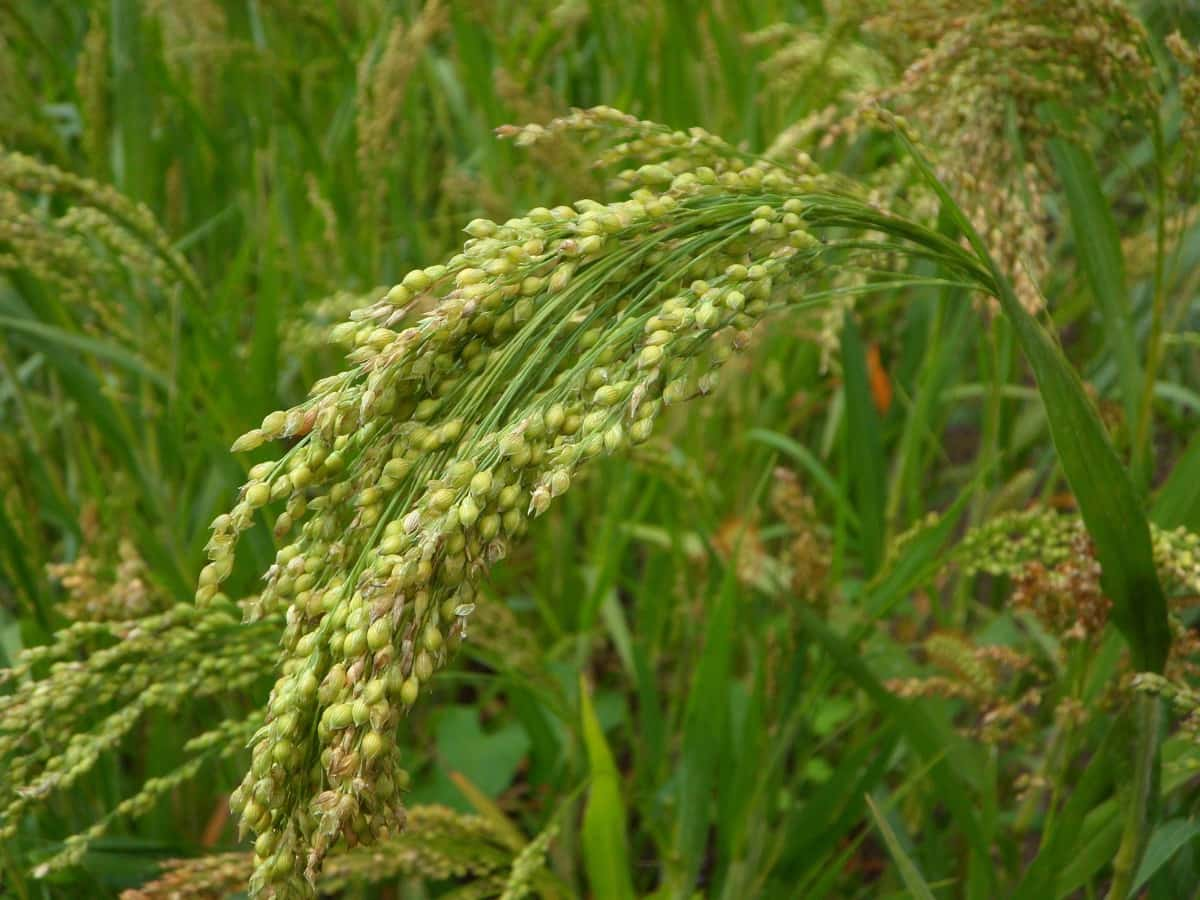
Panicum sumatrense, also known as little millet, is a type of millet that is native to India and is known for its high nutritional value and drought tolerance. It is a staple food in many parts of India and is considered one of the world’s oldest cultivated grains. Organic little millet farming involves growing little millet without using synthetic chemicals, such as pesticides and fertilizers.
Instead, organic farmers rely on natural methods to control pests and enrich the soil, such as crop rotation, companion planting, and using organic fertilizers and pest control methods. Organic little millet farming can be a rewarding and sustainable way to produce nutritious food and contribute to the local economy. It requires careful planning and attention to detail, but the results can be worth the effort.
Organic Little Millet farming
Description of Little Millet plant
Little millet (Panicum sumatrense) is a small, annual grass native to Southeast Asia. It is a type of millet, a group of grasses commonly grown for their tiny, nutritious seeds. Little millet is a hardy plant that can tolerate drought and poor soil conditions, making it well-suited for cultivation in tropical and subtropical regions. The plant grows to a height of about 1-2 meters and has thin, narrow leaves that are green in color.
It produces small, spike-like green or purple inflorescences and contains tiny, round seeds harvested for food. Little millet is a good source of protein, fiber, and various nutrients, including vitamins B and E, calcium, and iron. In addition to being used as a food grain, little millet is also used as a feed grain for livestock and as a cover crop to improve soil fertility. It is grown in many countries worldwide, including India, China, and Indonesia.
Little millet has a short growing season of 45 to 60 days and is drought- and heat tolerant. It is a low-maintenance crop that is simple to grow and requires few resources. Little millet is also resistant to pests and diseases, making it ideal for organic farming. Because of its high yield potential, it is an economically viable option for small-scale farmers. Many rural families in India and Pakistan rely on it for nutrition, and it is gaining popularity as a gluten-free, health-promoting grain.
World’s top 10 producing countries of Little Millet:
- India – India is the leading producer of little millet, accounting for around 50% of the world’s production. It is widely grown in Karnataka, Tamil Nadu, Andhra Pradesh, and Telangana.
- China – China is the second-largest producer of little millet, with a significant percentage of production coming from Henan, Yunnan, and Sichuan provinces.
- Indonesia – Indonesia is the third-largest producer of little millet, with most of the production coming from the islands of Java and Sumatra.
- Nigeria – Nigeria is the fourth-largest producer of little millet, with significant production in the states of Kano, Kaduna, and Jigawa.
- Sudan – Sudan is the fifth-largest producer of little millet, with most of the production coming from the states of Blue Nile, Gedaref, and Kassala.
- Ethiopia – Ethiopia is the sixth-largest producer of little millet, with significant production in Oromia, Amhara, and Tigray regions.
- Burkina Faso – Burkina Faso is the seventh-largest producer of little millet, with most of the production coming from the regions of Centre-Ouest and Centre-Est.
- Afghanistan – Afghanistan is the eighth-largest producer of little millet, with significant production in the provinces of Nangarhar, Balkh, and Kunduz.
- Nepal – Nepal is the ninth-largest producer of little millet, with most of the production coming from Eastern and Central Nepal regions.
- Mali – Mali is the tenth-largest producer of little millet, with significant production in the regions of Ségou and Mopti.
In case you missed it: Top 12 Steps to Boost Millet Yield: How to Increase Millets production, quality, and tips
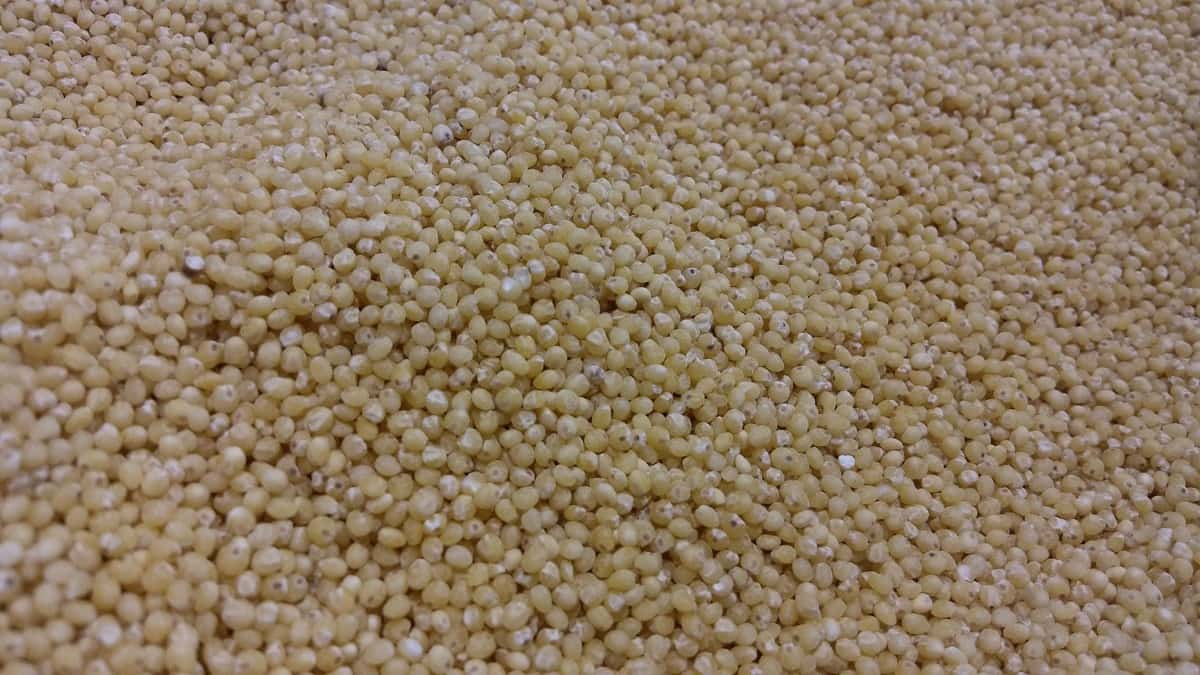
Health benefits of Little Millet
- Rich in nutrients: Little millet is a good source of vitamins and minerals, including iron, magnesium, and phosphorus. It is also rich in antioxidants, which can help protect the body against free radicals and inflammation.
- Low in calories: Little millet has a low-calorie content, making it a good choice for those looking to lose weight or maintain a healthy weight.
- Gluten-free: Little millet is a gluten-free grain, making it suitable for those with celiac disease or gluten sensitivity.
- May improve blood sugar control: Some research suggests that little millet may help improve blood sugar control and insulin sensitivity, making it a good choice for those with diabetes or prediabetes.
- May lower cholesterol: Some studies have found that consuming little millet may help lower cholesterol levels, reducing the risk of heart disease.
- May improve gut health: Little millet contains prebiotics, which can help promote the growth of good bacteria in the gut and improve digestive health.
- May boost bone health: Little millet is a good source of magnesium essential for maintaining strong bones. It helps to reduce the risk of osteoporosis.
A step-by-step guide for beginners
Varieties of Little Millet farming
Thousands of improved and hybrid varieties are grown in various parts of the world. We may only be able to list some of the varieties here. However, some high-yielding cultivars are JK-4, JK-8, JK-36, OLM 203, JK, TNAU 63, CO 3, C0-4, and K1. OLM 203, OLM 20, JK 8, BL 6, BL-4, JK 36, OLM 203, JK 8, GV 2, GV 1, OLM 203, JK 8, GV 2, GV 1, OLM 203, JK 8, GV 2, GV 1, OLM 203, JK 8, GV 2, GV 1, OLM 203, JK 8, GV 2, GV 1, OLM 203, JK 8, GV 2, GV 1. Contact your local agriculture department to find a high-yielding variety appropriate for your region.
Land preparation and soil requirements for Little Millet
- Land preparation: Before planting little millet, it is essential to prepare the land by plowing, leveling the field, and tilling to a depth of about 8 inches. It will help to remove any weeds or debris and create a smooth, even surface for the seedlings to grow.
- Soil requirements: Little millet is a drought-tolerant crop that can grow in various soil types, including clay, loam, and sandy soils. However, it prefers well-draining soils with a pH range of 5.5-6.5. The soil with high organic matter is preferred and retains moisture well. Conducting a soil test before planting is vital to ensure that the soil has the appropriate nutrients and pH levels. If necessary, add organic matter or lime to adjust the pH or add fertilizers to enhance the nutrient levels.
Temperature, climate, and rainfall requirements for Organic Little Millet farming
Organic little millet is a tropical grain crop that thrives in warm, humid climates with consistent rainfall.
- Temperature: Organic little millet requires a minimum temperature of 20°C (68°F) and prefers a range of 25-30°C (77-86°F). It can tolerate temperatures up to 35°C (95°F), but higher temperatures may reduce crop yields.
- Climate: Organic little millet is best suited for tropical and subtropical regions with a long growing season, typically lasting 6-8 months. It requires high humidity and consistent moisture throughout the growing season.
- Rainfall: Organic little millet requires a minimum of 750-800 mm (30-32 inches) of rainfall annually, with a consistent water supply throughout the growing season. Drought conditions can severely impact crop yields. In areas with low rainfall, irrigation may be necessary to provide sufficient moisture for the crop.
In case you missed it: Best Fertilizer for Finger Millet (Ragi): Organic, Bio-fertilizers, NPK, How and When to Apply
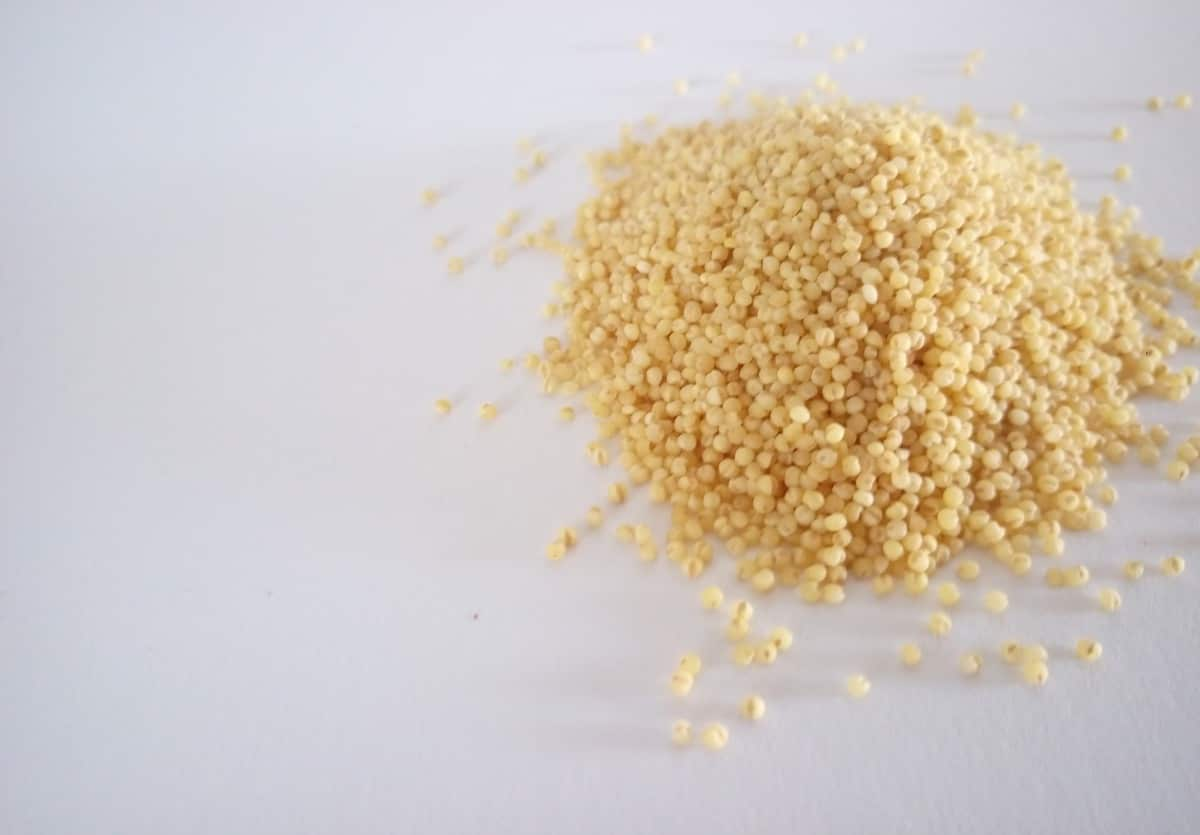
Propagation in Organic Little Millet farming
Organic little millet farming uses natural propagation methods, including planting seeds directly in the soil.
Seed Propagation:
- Select high-quality seeds for planting. These should be free from disease and pests and have a high germination rate.
- Prepare the soil for planting by tilling and adding organic matter such as compost or well-rotted manure.
- Sow the seeds in rows or broadcast them over the soil, depending on the size of the field.
- Cover the seeds with a thin layer of soil and water well.
- Keep the soil moist and weed-free during the germination period.
Seeds and seed rate for organic Little Millet farming
The recommended seed rate for organic little millet farming is around 8–12 kg per ha. The seed should be of good quality and free from diseases or pests. Using locally adapted varieties of little millet is recommended as they are more suitable for the local soil and climatic conditions.
It is also essential to properly prepare the seedbed before planting the seeds. The seedbed should be well-draining, well-aerated, and free from weeds. The seeds should be planted at a depth of about 1-2 inches and about 6–8 inches apart. It is also important to regularly water the seedlings and apply organic fertilizers to ensure proper growth and development.
Sowing and spacing in organic Little Millet farming
In organic little millet farming, sowing is done by hand or using a seed drill. Good space for the seeds to ensure proper growth and yield is essential. The recommended spacing for little millet is 20–25 cm between rows and 15–20 cm between plants within a row.
Agrobacterium radiobacter and Aspergillus awamori are used as biofertilizers for seed inoculation to increase seed yield. Before sowing, it is crucial to prepare the soil by removing weeds and adding organic matter, such as compost or well-rotted manure. The soil should also be well-drained and moist. To sow the seeds:
- Create furrows in the soil with a hoe or rake and evenly distribute the seeds.
- Cover the seeds with soil and press down gently to ensure good soil-to-seed contact.
- Water the seeds immediately after sowing to help them germinate.
Keeping the soil moist and free of weeds during the growing season is vital to ensure optimal growth and yield. In addition, adding organic fertilizers such as compost or green manure can help to improve soil fertility and support the growth of the little millet plants.
Organic manures and bio-fertilizers in Little Millet farming
Organic manures and bio-fertilizers are essential for sustainable and healthy little millet farming. These organic inputs improve soil structure, fertility, and overall plant growth. Organic manures such as cow dung, goat dung, and compost can be applied to the soil before planting or during the growing season. These manures provide essential nutrients such as nitrogen, phosphorous, and potassium to the plants.
They also increase the microbial activity in the soil, leading to better nutrient availability for the plants. Bio-fertilizers such as rhizobia, mycorrhiza, and Azospirillum can enhance the nutrient uptake of little millet plants. Rhizobia fix atmospheric nitrogen and make it available to the plants, while mycorrhiza helps absorb phosphorous and other micronutrients.
Azospirillum increases the plant’s root growth and improves the soil structure. It is essential to use organic manures and bio-fertilizers in little millet farming, as they help maintain the soil’s long-term fertility and reduce the dependence on chemical fertilizers. It leads to healthier and more sustainable farming practices.
Irrigation in organic Little Millet farming
Irrigation is vital in organic little millet farming, as it helps maintain the soil’s moisture levels and ensure proper crop growth. Irrigating the fields regularly, but not excessively, is recommended, as excess water can lead to waterlogging and soil erosion. One way to ensure proper irrigation in organic little millet farming is to use drip irrigation systems, which allow for precise and efficient watering of the crops.
In case you missed it: Best Fertilizer for Bajra/Pearl Millet: Organic, NPK, Compost, When and How to Apply
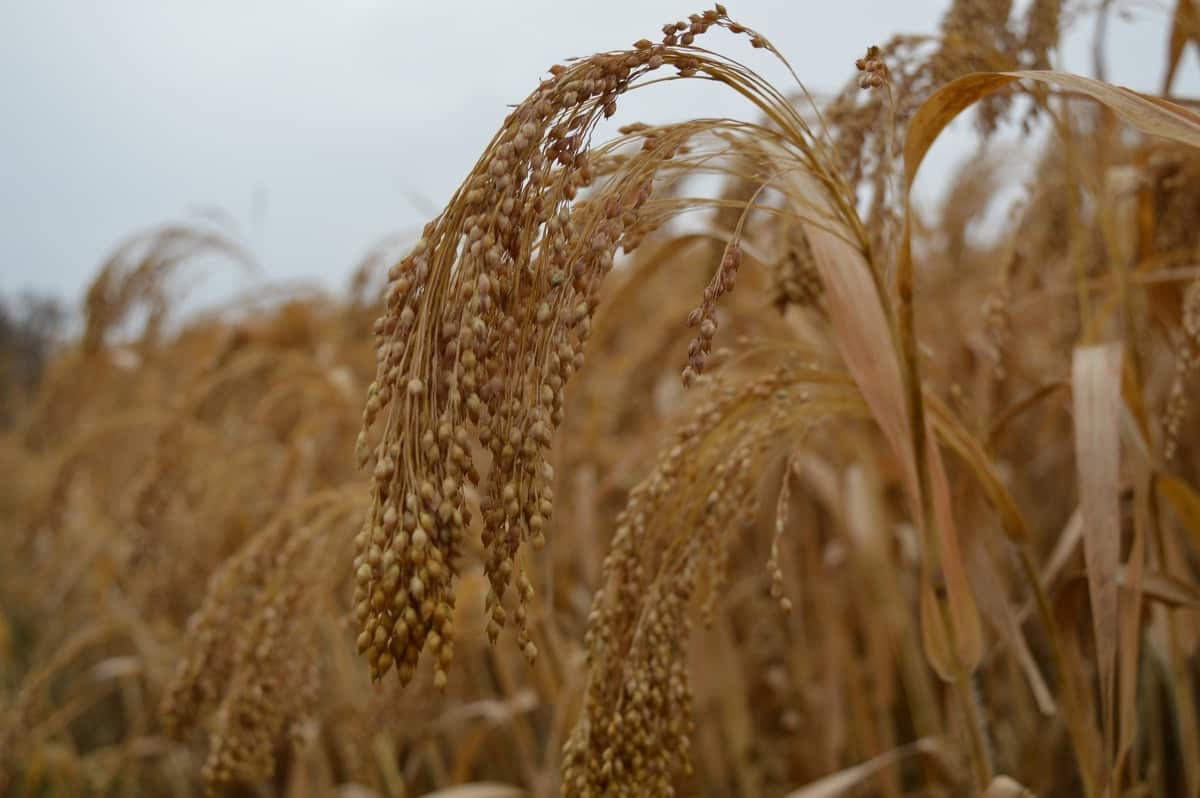
It is also essential to use organic fertilizers and compost to improve the soil’s water-holding capacity and reduce the need for frequent irrigation. Another important aspect of irrigation in organic little millet farming is water management. It is essential to conserve water and use it efficiently to avoid waste and reduce its negative environmental impact.
It can be achieved by using mulch or covering the soil with organic matter to retain moisture and avoiding watering during the hottest parts of the day to minimize evaporation. Overall, proper irrigation in organic little millet farming is crucial for the success of the crops and the sustainability of the farming operation.
Weed control practices in organic Little Millet Farming
- Hand weeding: This involves manually removing weeds from the field by hand. This method is effective for small fields and early-stage weeds.
- Cover cropping involves planting a cover crop, such as legumes, between rows of little millet. The cover crop helps to suppress weeds by shading the soil and competing for resources.
- Mulching: Using a layer of organic material, such as straw or wood chips, can help to suppress weeds by blocking sunlight and preventing weed seeds from germinating.
- Crop rotation: Rotating little millet with different crops can help reduce weeds that thrive in specific soil conditions.
- Natural herbicides: Several natural herbicides can control weeds in organic little millet farming, such as vinegar and salt.
- Mechanical cultivation: Using tools such as hoes or rotary tillers can help to control weeds by disrupting the soil and cutting off weed growth.
It is essential to use a combination of these methods to control weeds in an organic little millet farm effectively.
Organic pest and diseases in Little Millet farming
- Aphids: These tiny insects suck the sap from the little millet plants, causing stunted growth and reduced yields. They can be controlled by introducing natural predators such as ladybugs and lacewings or by spraying the plants with neem oil or garlic.
- Downy mildew: This fungal disease causes yellow or brown spots to appear on the leaves of little millet plants, eventually leading to leaf death. It can be controlled by maintaining proper plant spacing, avoiding overhead irrigation, and applying a copper-based fungicide.
- Root rot is a common problem in little millet farming, caused by various fungi. It can be prevented by ensuring proper drainage and applying a bio fungicide such as Trichoderma harzianum.
- Cutworms: These caterpillars feed on the stems and leaves of little millet plants, causing damage to the plants. They can be controlled by setting up traps or applying a natural insecticide such as Bacillus thuringiensis.
- Stem borers: These insects burrow into the stem of little millet plants, causing the plants to wilt and eventually die. They can be controlled by applying a neem oil-based insecticide or by introducing natural predators such as birds and wasps.
In case you missed it: Types of Millets In India, Cultivation FAQs
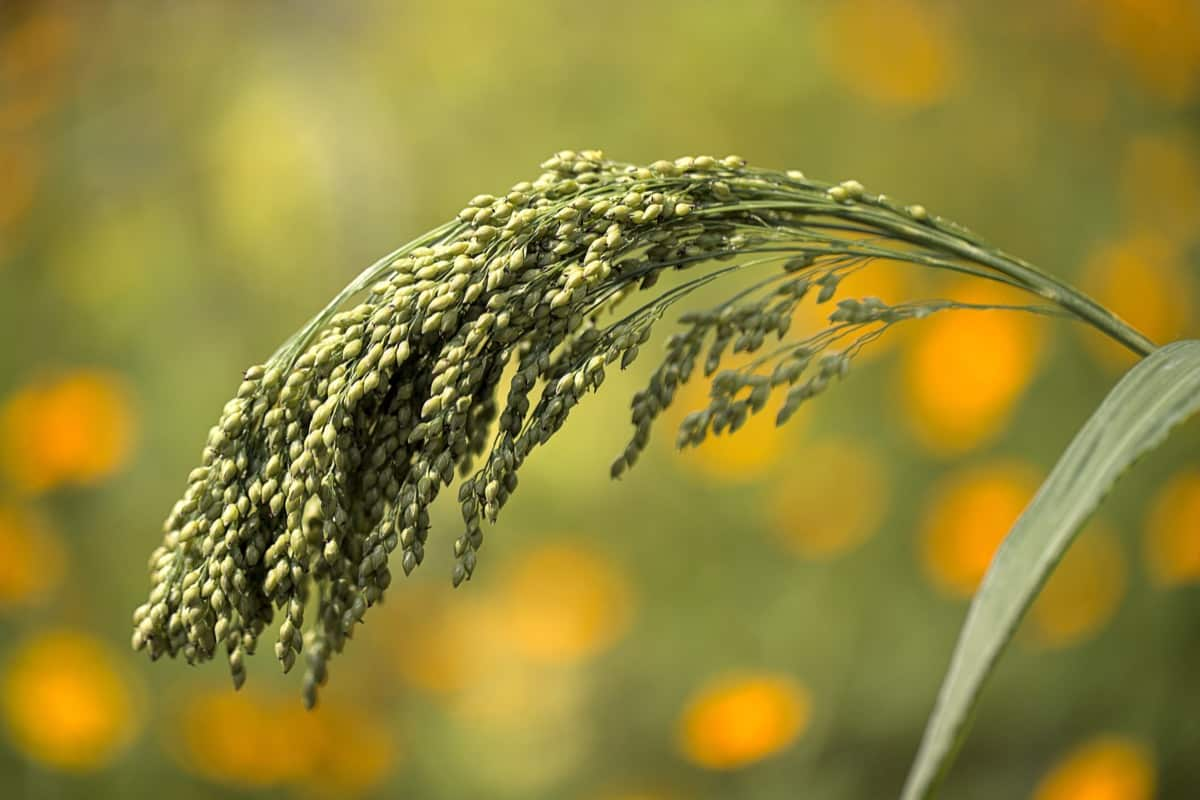
Threshing and yields in Little Millet farming
Threshing in little millet farming refers to separating the grain from the plant’s stem and chaff. It can be done manually by beating the plants with a stick or using a machine such as a thresher. The yield in little millet farming depends on various factors, such as soil fertility, irrigation, and weather conditions.
A hectare of land can produce 700–1050 kg of little millet. However, yields can vary greatly depending on the specific farming practices and conditions. Factors that can affect the yield of little millet include the variety of the millet, the amount of water and nutrients available, and the presence of pests and diseases. Proper soil preparation, fertilization, and crop management practices can help improve the yield of little millet.
Harvesting and storage in Little Millet farming
Little millet, also known as Panicum sumatrense, is a type of small grain grown for its nutritious seeds. It is a popular crop in many parts of the world, particularly in dry, hot climates. Harvesting and storing little millet is similar to that of other small grains. Here are the general steps involved:
- Determine when to harvest: Little millet is ready for harvest when the seeds have matured and the plant has turned yellow or brown. It typically occurs about 3-4 months after planting. You can check the maturity of the seeds by squeezing a few seeds between your fingers. If the seeds are hard and difficult to crush, they are ready for harvest.
- Cut the plants: Cut the plants near the base of the stem using a sickle or other cutting tool. Be careful not to damage the seeds as you cut.
- Dry the plants: Lay the cut plants out in the sun to dry for a few days. It will help to preserve the seeds and make them easier to thresh (separate the seeds from the plant).
- Thresh the seeds: There are several methods for little threshing millet, including using a flail (a wooden stick attached to a long handle) to beat the plants or running the plants through a machine called a thresher.
- Clean the seeds: Once the seeds have been separated from the plant, they should be cleaned to remove debris or trash. It can be done using a winnowing tray or machine.
- Store the seeds: Once cleaned, It is recommended to store little millet at a moisture content of around 10-12% to prevent spoilage and insect infestation. They should be stored in a dry, cool place to prevent them from becoming rancid or attracting pests. Sealed containers or bags are a good choice for storage. It is essential to store the seeds in a place free from moisture, as this can cause the seeds to spoil.
In case you missed it: Bajra Cultivation Income (Pearl Millet), Yield, Profit Guide
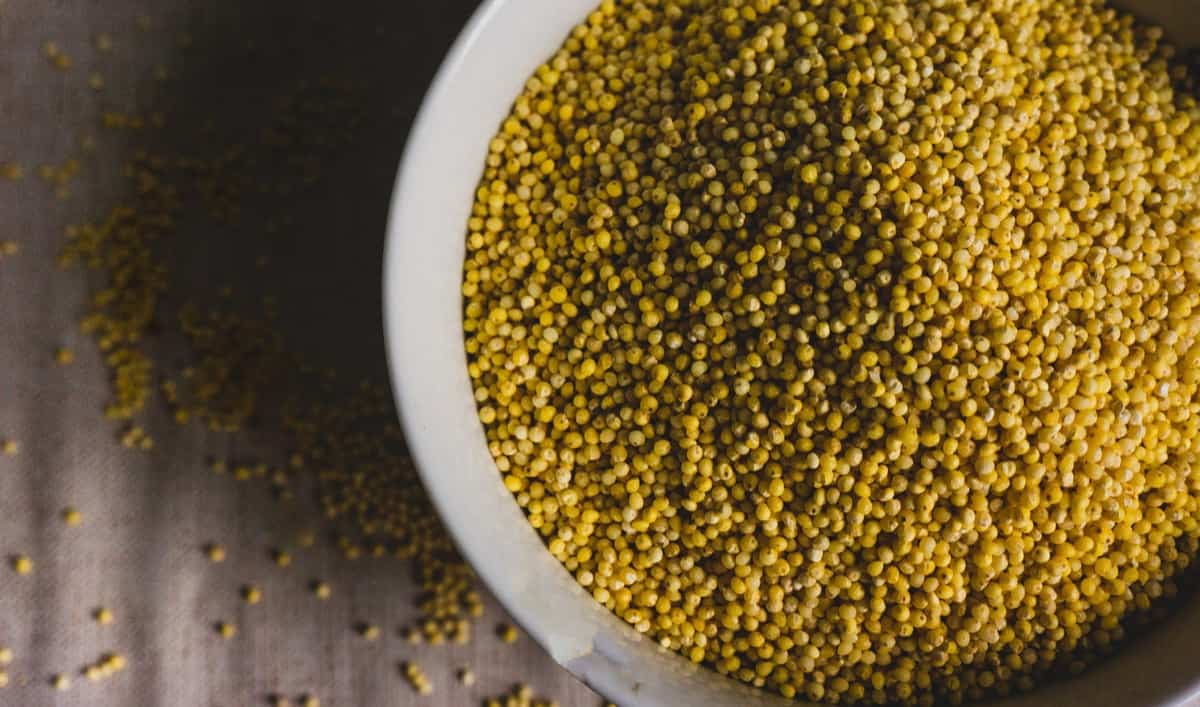
Conclusion
Little millet farming can be a lucrative and sustainable agricultural venture for farmers. It has a high nutritional value, with a high content of minerals, vitamins, and protein, making it a valuable addition to the diet of humans and livestock. Additionally, little millet has a high demand in the market, both domestically and internationally, making it a viable option for farmers looking to sell their produce.
However, little millet farming does require proper planning and management, including proper selection of seeds, soil preparation, irrigation, and pest and disease control. With the right techniques and management practices, little millet farming can be a successful and rewarding enterprise for farmers.
- How to Build a Low-budget Goat Shed: Cheap Ideas and Tips
- Goat Farming Training Programs in India: A Beginner’s Guide
- Types of Pesticides Used in Agriculture: A Beginner’s Guide
- Economical Aquaculture: A Guide to Low-Budget Fish Farming
- 15 Common Planting Errors That Can Doom Your Fruit Trees
- How to Make Houseplants Bushy: Effective Tips and Ideas
- Innovative Strategies for Boosting Coconut Pollination and Yield
- Pollination Strategies for Maximum Pumpkin Yield
- The Complete Guide to Chicken Fattening: Strategies for Maximum Growth
- Natural Solutions for Tulip Problems: 100% Effective Remedies for Leaf and Bulb-Related Issues
- Revolutionizing Citrus Preservation: Towards a Healthier, Greener Future
- Natural Solutions for Peony Leaf and Flower Problems: 100% Effective Remedies
- Maximizing Profits with Avocado Contract Farming in India: A Comprehensive Guide
- Natural Solutions for Hydrangea Problems: 100% Effective Remedies for Leaf and Flowers
- The Ultimate Guide to Choosing the Perfect Foliage Friend: Bringing Life Indoors
- From Sunlight to Sustainability: 15 Ways to Use Solar Technology in Agriculture
- The Ultimate Guide to Dong Tao Chicken: Exploring from History to Raising
- The Eco-Friendly Makeover: How to Convert Your Unused Swimming Pool into a Fish Pond
- Mastering the Art of Delaware Chicken Farming: Essentials for Healthy Backyard Flocks
- 20 Best Homemade Fertilizers for Money Plant: DIY Recipes and Application Methods
- How to Craft a Comprehensive Free-Range Chicken Farming Business Plan
- Brighten Your Flock: Raising Easter Egger Chickens for Beauty and Bounty
- How to Optimize Your Poultry Egg Farm Business Plan with These Strategies
- Subsidy for Spirulina Cultivation: How Indian Government Schemes Encouraging Spirulina Farmers
- Ultimate Guide to Raising Dominique Chickens: Breeding, Feeding, Egg-Production, and Care
- Mastering the Art of Raising Jersey Giant Chickens: Care, Feeding, and More
- Ultimate Guide to Raising Legbar Chickens: Breeding, Farming Practices, Diet, Egg-Production
- How to Raise Welsummer Chickens: A Comprehensive Guide for Beginners
- How to Protect Indoor Plants in Winter: A Comprehensive Guide
- Ultimate Guide to Grow Bag Gardening: Tips, Tricks, and Planting Ideas for Urban Gardeners
- Guide to Lotus Cultivation: How to Propagate, Plant, Grow, Care, Cost, and Profit
- Agriculture Drone Subsidy Scheme: Government Kisan Subsidy, License, and How to Apply Online
- Ultimate Guide to Raising Araucana Chickens: Breed Profile, Farming Economics, Diet, and Care
- Bringing Hydroponics to Classroom: Importance, Benefits of Learning for School Students
- Ultimate Guide to Raising Polish Chickens: Breed Profile, Farming Economics, Diet, and Care
- Ultimate Guide to Raising Australorp Chickens: Profile, Farming Economics, Egg Production, Diet, and Care